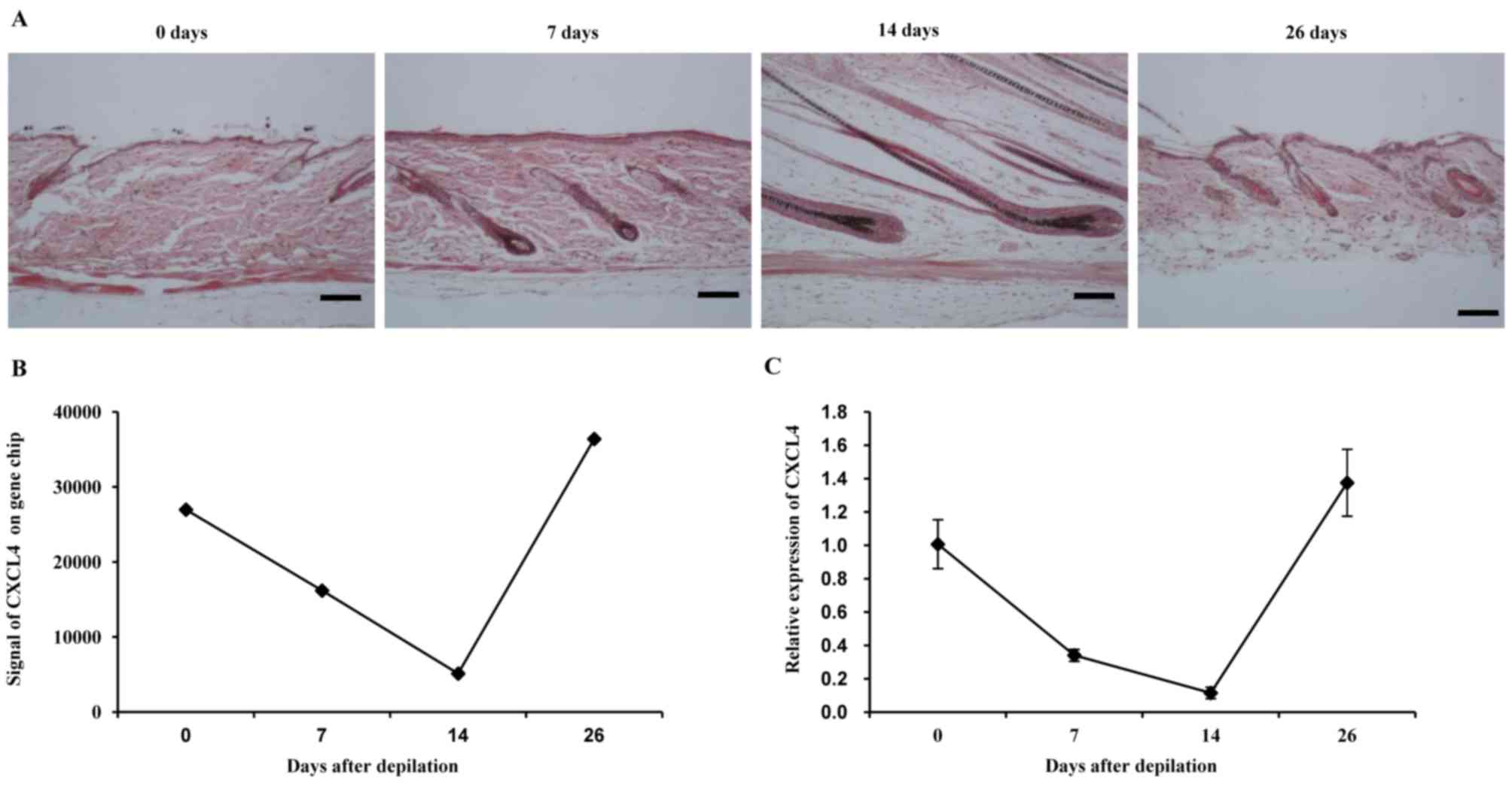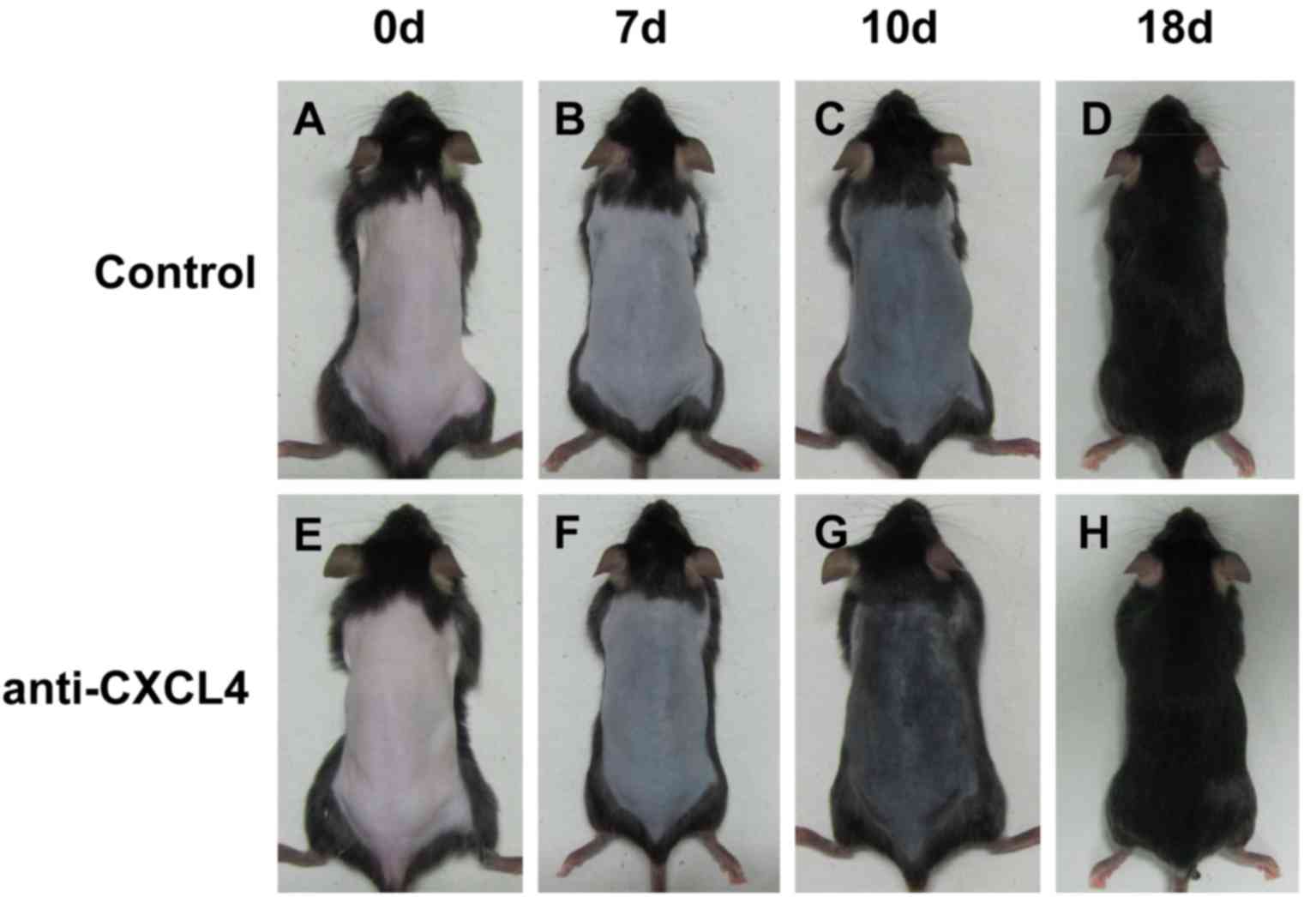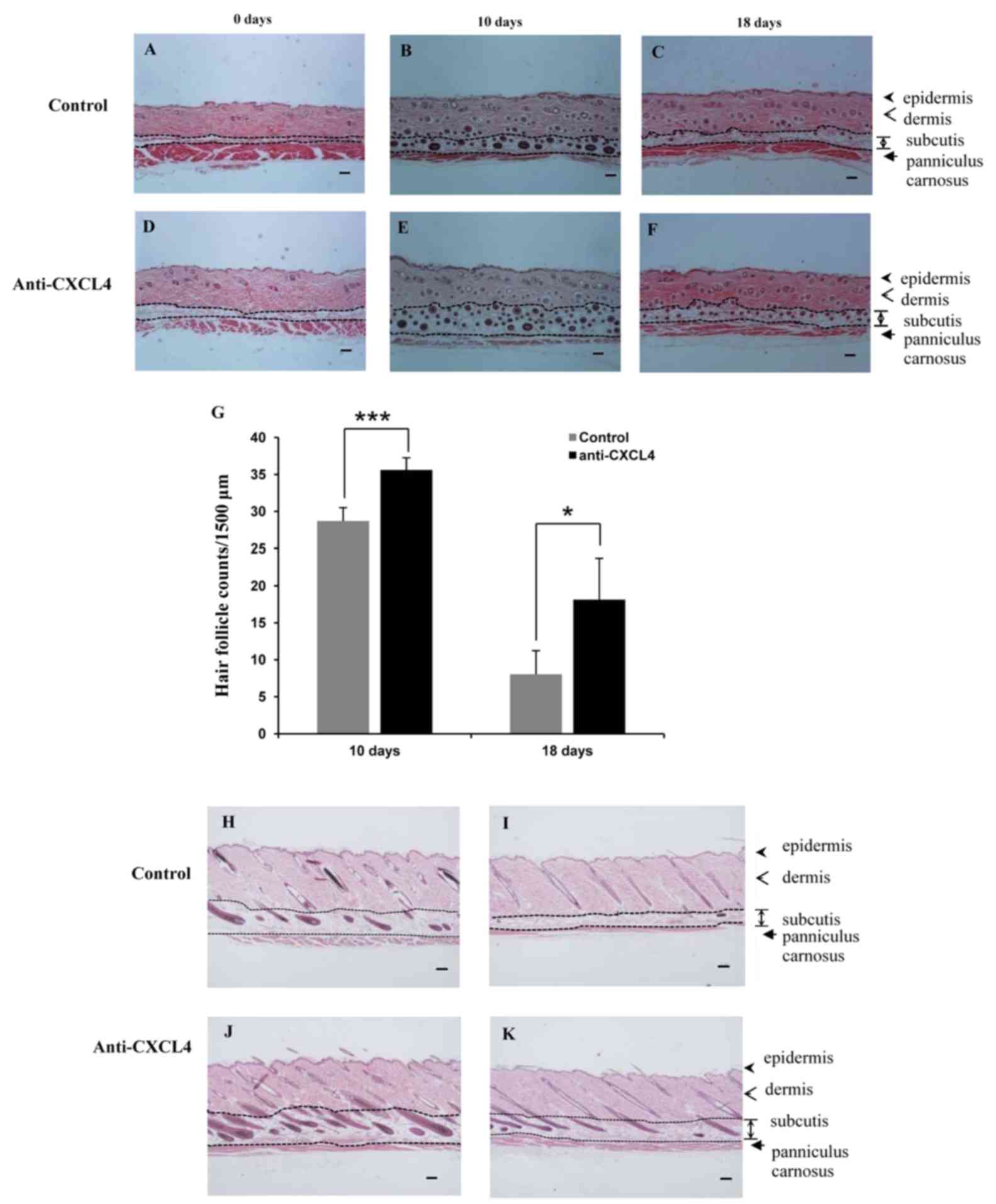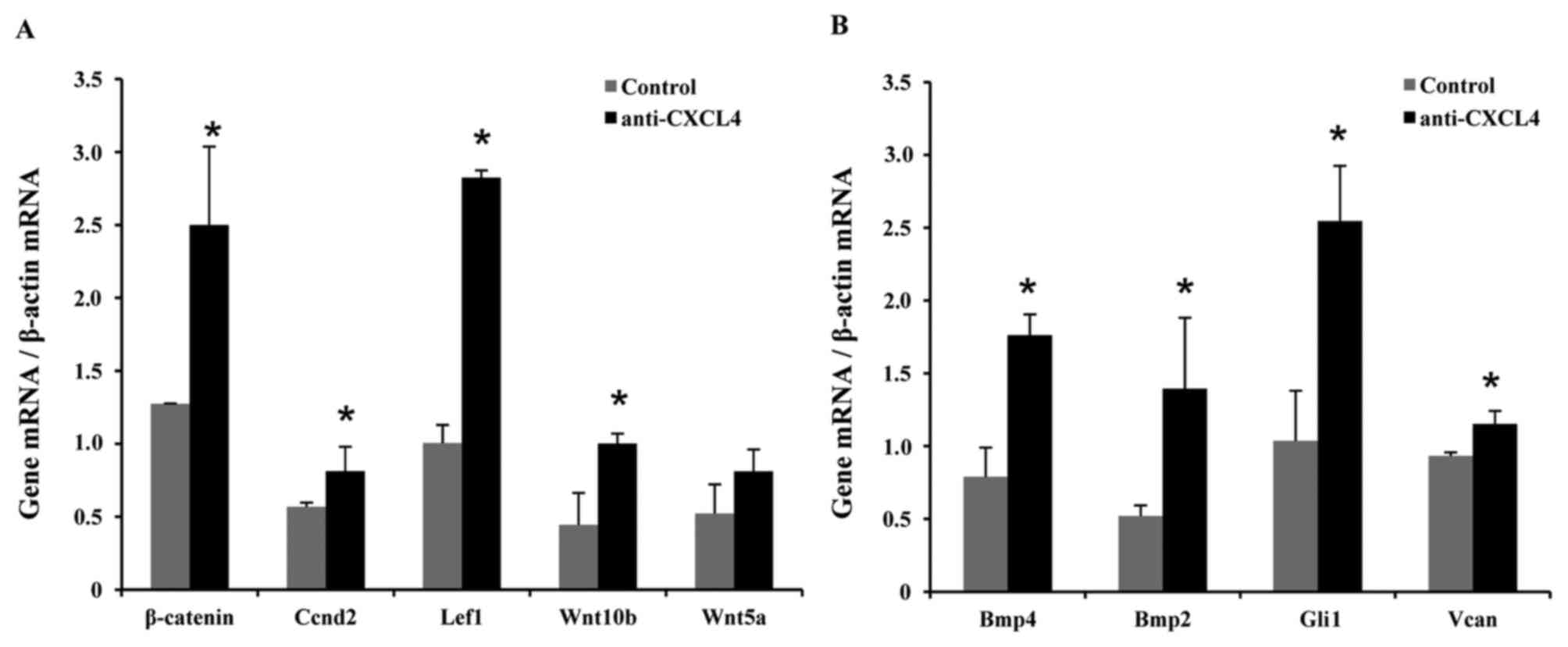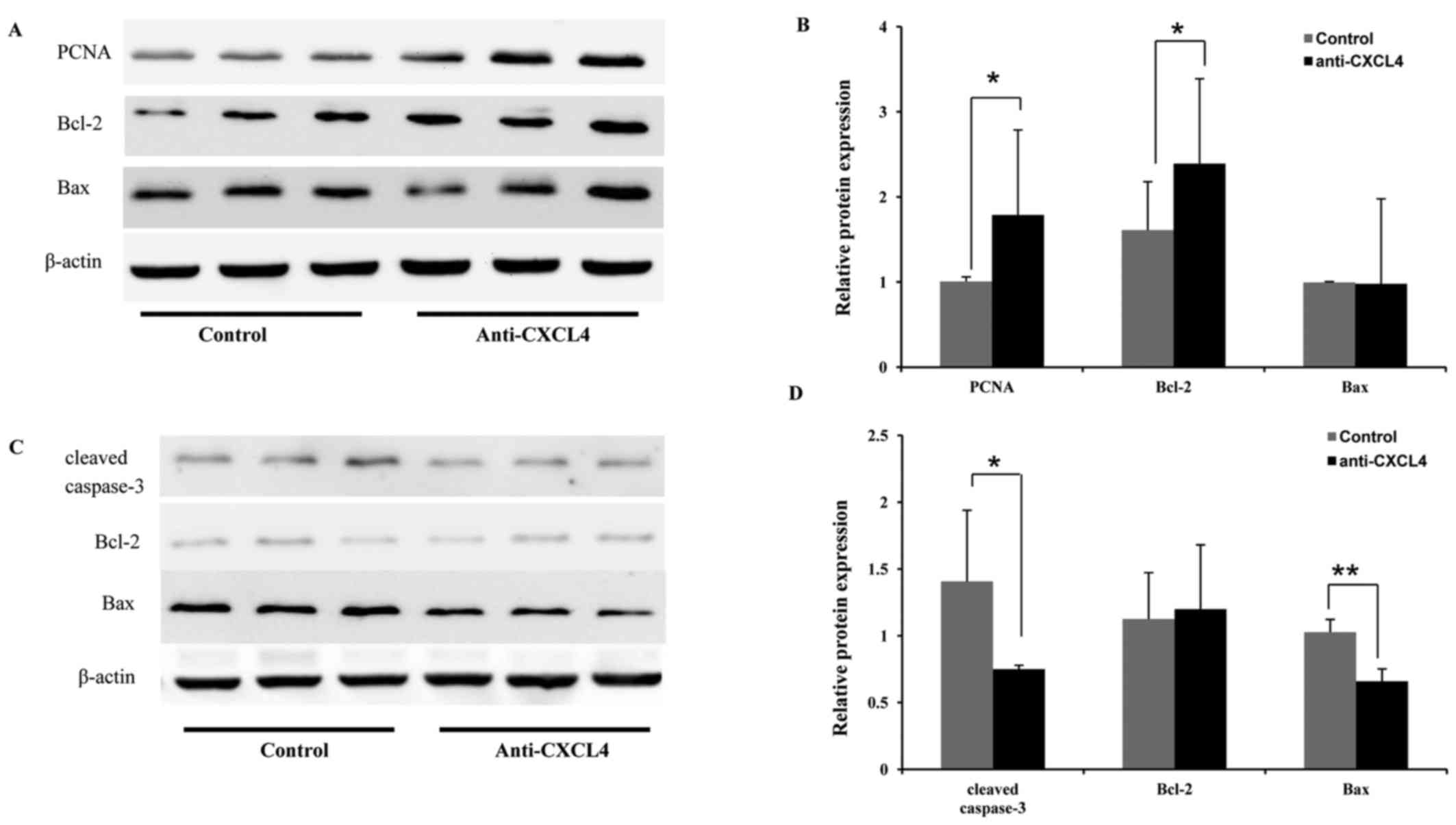|
1
|
Müller-Röver S, Handjiski B, van der Veen
C, Eichmüller S, Foitzik K, McKay IA, Stenn KS and Paus R: A
comprehensive guide for the accurate classification of murine hair
follicles in distinct hair cycle stages. J Invest Dermatol.
117:3–15. 2001. View Article : Google Scholar : PubMed/NCBI
|
|
2
|
Schneider MR, Schmidt-Ullrich R and Paus
R: The hair follicle as a dynamic miniorgan. Curr Biol.
19:R132–R142. 2009. View Article : Google Scholar : PubMed/NCBI
|
|
3
|
Wang TL, Zhou C, Shen YW, Wang XY, Ding
XL, Tian S, Liu Y, Peng GH, Xue SQ, Zhou JE, et al: Prevalence of
androgenetic alopecia in China: A community-based study in six
cities. Br J Dermatol. 162:843–847. 2010. View Article : Google Scholar : PubMed/NCBI
|
|
4
|
Cotsarelis G and Millar SE: Towards a
molecular understanding of hair loss and its treatment. Trends Mol
Med. 7:293–301. 2001. View Article : Google Scholar : PubMed/NCBI
|
|
5
|
Zhang NN, Park DK and Park HJ: Hair
growth-promoting activity of hot water extract of Thuja orientalis.
BMC Complement Altern Med. 13:92013. View Article : Google Scholar : PubMed/NCBI
|
|
6
|
Miller MD and Krangel MS: Biology and
biochemistry of the chemokines: A family of chemotactic and
inflammatory cytokines. Crit Rev Immunol. 12:17–46. 1992.PubMed/NCBI
|
|
7
|
Deutsch E, Johnson SA and Seegers WH:
Differentiation of certain platelet factors related to blood
coagulation. Circ Res. 3:110–115. 1955. View Article : Google Scholar : PubMed/NCBI
|
|
8
|
Rendu F and Brohard-Bohn B: The platelet
release reaction: Granules' constituents, secretion and functions.
Platelets. 12:261–273. 2001. View Article : Google Scholar : PubMed/NCBI
|
|
9
|
Kasper B and Petersen F: Molecular
pathways of platelet factor 4/CXCL4 signaling. Eur J Cell Biol.
90:521–526. 2011. View Article : Google Scholar : PubMed/NCBI
|
|
10
|
Scheuerer B, Ernst M, Dürrbaum-Landmann I,
Fleischer J, Grage-Griebenow E, Brandt E, Flad HD and Petersen F:
The CXC-chemokine platelet factor 4 promotes monocyte survival and
induces monocyte differentiation into macrophages. Blood.
95:1158–1166. 2000.PubMed/NCBI
|
|
11
|
Han ZC, Lu M, Li J, Defard M, Boval B,
Schlegel N and Caen JP: Platelet factor 4 and other CXC chemokines
support the survival of normal hematopoietic cells and reduce the
chemosensitivity of cells to cytotoxic agents. Blood. 89:2328–2335.
1997.PubMed/NCBI
|
|
12
|
Gupta SK and Singh JP: Inhibition of
endothelial cell proliferation by platelet factor-4 involves a
unique action on S phase progression. J Cell Biol. 127:1121–1127.
1994. View Article : Google Scholar : PubMed/NCBI
|
|
13
|
Luster AD, Greenberg SM and Leder P: The
IP-10 chemokine binds to a specific cell surface heparan sulfate
site shared with platelet factor 4 and inhibits endothelial cell
proliferation. J Exp Med. 182:219–231. 1995. View Article : Google Scholar : PubMed/NCBI
|
|
14
|
Maione TE, Gray GS, Petro J, Hunt AJ,
Donner AL, Bauer SI, Carson HF and Sharpe RJ: Inhibition of
angiogenesis by recombinant human platelet factor-4 and related
peptides. Science. 247:77–79. 1990. View Article : Google Scholar : PubMed/NCBI
|
|
15
|
Watson JB, Getzler SB and Mosher DF:
Platelet factor 4 modulates the mitogenic activity of basic
fibroblast growth factor. J Clin Invest. 94:261–268. 1994.
View Article : Google Scholar : PubMed/NCBI
|
|
16
|
Gao J, Gao J, Qian L, Wang X, Wu M, Zhang
Y, Ye H, Zhu S, Yu Y and Han W: Activation of p38-MAPK by
CXCL4/CXCR3 axis contributes to p53-dependent intestinal apoptosis
initiated by 5-fluorouracil. Cancer Biol Ther. 15:982–991. 2014.
View Article : Google Scholar : PubMed/NCBI
|
|
17
|
Paus R, Stenn KS and Link RE: Telogen skin
contains an inhibitor of hair growth. Br J Dermatol. 122:777–784.
1990. View Article : Google Scholar : PubMed/NCBI
|
|
18
|
Livak KJ and Schmittgen TD: Analysis of
relative gene expression data using real-time quantitative PCR and
the 2(−Delta Delta C(T)) Method. Methods. 25:402–408. 2001.
View Article : Google Scholar : PubMed/NCBI
|
|
19
|
Plonka PM, Michalczyk D, Popik M,
Handjiski B, Slominski A and Paus R: Splenic eumelanin differs from
hair eumelanin in C57BL/6 mice. Acta Biochim Pol. 52:433–441.
2005.PubMed/NCBI
|
|
20
|
Datta K, Singh AT, Mukherjee A, Bhat B,
Ramesh B and Burman AC: Eclipta alba extract with potential for
hair growth promoting activity. J Ethnopharmacol. 124:450–456.
2009. View Article : Google Scholar : PubMed/NCBI
|
|
21
|
Huelsken J, Vogel R, Erdmann B, Cotsarelis
G and Birchmeier W: beta-Catenin controls hair follicle
morphogenesis and stem cell differentiation in the skin. Cell.
105:533–545. 2001. View Article : Google Scholar : PubMed/NCBI
|
|
22
|
Van Mater D, Kolligs FT, Dlugosz AA and
Fearon ER: Transient activation of beta -catenin signaling in
cutaneous keratinocytes is sufficient to trigger the active growth
phase of the hair cycle in mice. Genes Dev. 17:1219–1224. 2003.
View Article : Google Scholar : PubMed/NCBI
|
|
23
|
Mundy G, Gutierrez G, Garrett R, Gallwitz
W, Rossini G, Christiansen C and Langenberg A: Proteasome
inhibitors stimulate both bone formation and hair growth by similar
mechanisms. Ann N Y Acad Sci. 1117:298–301. 2007. View Article : Google Scholar : PubMed/NCBI
|
|
24
|
Dong L, Hao H, Xia L, Liu J, Ti D, Tong C,
Hou Q, Han Q, Zhao Y, Liu H, et al: Treatment of MSCs with
Wnt1a-conditioned medium activates DP cells and promotes hair
follicle regrowth. Sci Rep. 4:54322014. View Article : Google Scholar : PubMed/NCBI
|
|
25
|
Gentilini G, Kirschbaum NE, Augustine JA,
Aster RH and Visentin GP: Inhibition of human umbilical vein
endothelial cell proliferation by the CXC chemokine, platelet
factor 4 (PF4), is associated with impaired downregulation of
p21(Cip1/WAF1). Blood. 93:25–33. 1999.PubMed/NCBI
|
|
26
|
Woller G, Brandt E, Mittelstädt J,
Rybakowski C and Petersen F: Platelet factor 4/CXCL4-stimulated
human monocytes induce apoptosis in endothelial cells by the
release of oxygen radicals. J Leukoc Biol. 83:936–945. 2008.
View Article : Google Scholar : PubMed/NCBI
|
|
27
|
Soma T, Fujiwara S, Shirakata Y, Hashimoto
K and Kishimoto J: Hair-inducing ability of human dermal papilla
cells cultured under Wnt/β-catenin signalling activation. Exp
Dermatol. 21:307–309. 2012. View Article : Google Scholar : PubMed/NCBI
|
|
28
|
Fuchs E and Raghavan S: Getting under the
skin of epidermal morphogenesis. Nat Rev Genet. 3:199–209. 2002.
View Article : Google Scholar : PubMed/NCBI
|
|
29
|
Li YH, Zhang K, Yang K, Ye JX, Xing YZ,
Guo HY, Deng F, Lian XH and Yang T: Adenovirus-mediated Wnt10b
overexpression induces hair follicle regeneration. J Invest
Dermatol. 133:42–48. 2013. View Article : Google Scholar : PubMed/NCBI
|
|
30
|
Andl T, Reddy ST, Gaddapara T and Millar
SE: WNT signals are required for the initiation of hair follicle
development. Dev Cell. 2:643–653. 2002. View Article : Google Scholar : PubMed/NCBI
|
|
31
|
Gat U, DasGupta R, Degenstein L and Fuchs
E: De Novo hair follicle morphogenesis and hair tumors in mice
expressing a truncated beta-catenin in skin. Cell. 95:605–614.
1998. View Article : Google Scholar : PubMed/NCBI
|
|
32
|
Jiang S, Zhao L, Teklemariam T and Hantash
BM: Small cutaneous wounds induce telogen to anagen transition of
murine hair follicle stem cells. J Dermatol Sci. 60:143–150. 2010.
View Article : Google Scholar : PubMed/NCBI
|
|
33
|
Adams JM and Cory S: The Bcl-2 protein
family: Arbiters of cell survival. Science. 281:1322–1326. 1998.
View Article : Google Scholar : PubMed/NCBI
|
|
34
|
Lindner G, Botchkarev VA, Botchkareva NV,
Ling G, van der Veen C and Paus R: Analysis of apoptosis during
hair follicle regression (catagen). Am J Pathol. 151:1601–1617.
1997.PubMed/NCBI
|
|
35
|
Botchkareva NV, Ahluwalia G and Shander D:
Apoptosis in the hair follicle. J Invest Dermatol. 126:258–264.
2006. View Article : Google Scholar : PubMed/NCBI
|
|
36
|
Sabbagh L, Kaech SM, Bourbonnière M, Woo
M, Cohen LY, Haddad EK, Labrecque N, Ahmed R and Sékaly RP: The
selective increase in caspase-3 expression in effector but not
memory T cells allows susceptibility to apoptosis. J Immunol.
173:5425–5433. 2004. View Article : Google Scholar : PubMed/NCBI
|



